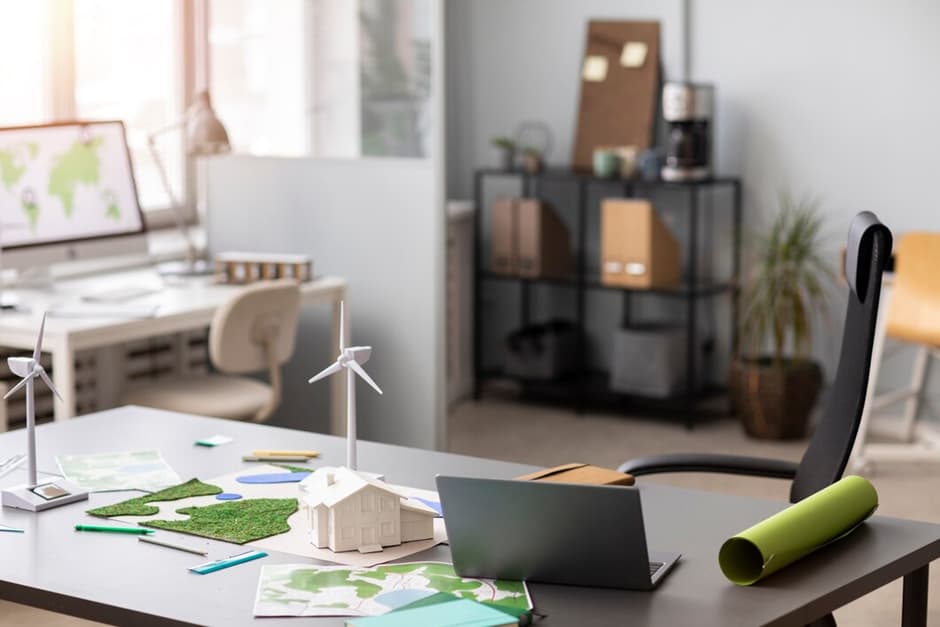Harnessing wind energy for your home is an excellent way to embrace renewable energy and reduce dependency on traditional power sources. As technology advances and the push for sustainable living grows stronger, more homeowners are considering small-scale wind turbines as a viable source of power. To ensure your home is well-prepared, follow these crucial steps to make your property wind energy ready.
Assessing Your Property’s Suitability
Before investing in a wind energy system, it’s essential to determine whether your property is suitable for wind energy generation. This involves evaluating factors such as wind speed, property size, and local regulations.
1. Measure Wind Speeds
The effectiveness of a wind turbine depends heavily on wind speed. Ideally, your property should have an average wind speed of at least 5–6 metres per second. To assess wind speeds, use an anemometer or consult local wind maps and online databases that provide wind speed averages in your area. This information is critical, as insufficient wind speeds may lead to poor energy output and a non-cost-effective system.
2. Check Zoning Laws and Regulations
Different areas have varying regulations regarding the installation of wind turbines. Before purchasing equipment, consult your local council or planning authority to understand zoning laws, height restrictions, noise regulations, and potential permits required for installation. Compliance with these regulations will prevent legal complications and ensure your project runs smoothly.
Selecting the Right Wind Turbine
Choosing the right type and size of wind turbine for your property is pivotal. Your choice will impact not only the amount of power generated but also the overall efficiency and maintenance of your energy system.
1. Vertical vs. Horizontal Turbines
Wind turbines come in two main types: vertical-axis and horizontal-axis turbines. Horizontal-axis turbines are more common and tend to be more efficient, especially in areas with consistent wind. However, vertical-axis turbines are more compact and work well in less windy or more turbulent environments, making them a good option for residential areas with varying wind conditions.
2. Size and Capacity Considerations
The size of the wind turbine you choose should align with your household energy needs and the average wind speeds in your area. Smaller residential turbines generally produce between 1–10 kW of power. If your energy consumption is higher, consider a larger turbine or combining wind energy with other renewable sources like solar panels.
Preparing Your Home for Installation

Once you’ve determined that wind energy is suitable for your property and chosen the right turbine, you must prepare your home and land for installation.
1. Select the Optimal Location
The turbine should be placed in an area free from obstructions such as tall trees or buildings that could block or disrupt wind flow. The higher the turbine is placed, the more consistent the wind and energy output. Aim for a location where the turbine can be installed on a tower at least 10 metres higher than any nearby obstacles within a 100-metre radius.
2. Strengthen Your Electrical System
Before connecting your turbine to your home’s electrical system, consult a qualified electrician to assess whether your current setup can support an additional power source. They can advise on any necessary upgrades to wiring, electrical panels, or other components. Installing an inverter to convert the turbine’s output from DC to AC is also essential for integrating wind energy into your existing system.
Financial Considerations and Support
Investing in wind energy can be financially demanding, so understanding the costs and potential incentives is vital for a feasible project.
1. Budget for Installation and Maintenance
The cost of a residential wind turbine can range from a few thousand to tens of thousands of pounds, depending on the size and type. Installation and maintenance should be factored into your budget. While initial costs may be significant, long-term savings and environmental benefits often outweigh them.
2. Explore Government Incentives
Many governments offer incentives to promote the use of renewable energy sources. Research local or national grants, tax credits, or subsidies that could offset some of the installation costs. These incentives make wind energy more affordable and attractive for homeowners.
Complementing Wind Energy with Other Solutions
Wind energy can be highly effective, but combining it with other renewable energy sources can enhance energy reliability and efficiency.
1. Integrate with Solar Power
Solar panels and wind turbines complement each other well, as sunny days are often less windy and vice versa. This combination ensures a more consistent power supply year-round and maximises your home’s energy independence.
2. Battery Storage for Energy Backup
To make the most of your wind energy system, consider installing battery storage. This allows you to store excess energy generated during peak wind conditions and use it when wind speeds are low. Energy storage systems provide an added layer of reliability, especially during power outages.
Final Thoughts: Moving Towards a Sustainable Future
Transitioning to wind energy at home requires thoughtful preparation and investment, but the long-term benefits make it worthwhile. Not only does it reduce your carbon footprint, but it also leads to potential savings on energy bills and adds value to your property.
By following these steps and consulting with professionals where needed, you can make your home wind energy ready and contribute to a more sustainable future. Embracing wind power is not just an investment in your home but a positive step toward protecting the environment for generations to come.